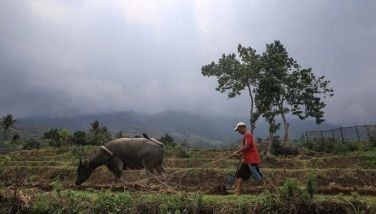Leprosy cases in Phl not new infections – WHO
MANILA, Philippines - While the Philippines is still seeing leprosy cases in some communities, these cases are actually not new infections, the World Health Organization (WHO) said.
“Leprosy is a very chronic disease. The incubation is very long so the cases that are developing now are infected a long, long time ago, 30 to 40 years ago,†Woojin Lew, a medical officer for Stop Tuberculosis and Leprosy Elimination at the WHO-Western Pacific Office, told The STAR.
The Philippines has eliminated leprosy as a public health problem in 1998. However, from 2006 to 2011, the country was the leading contributor in leprosy cases in Western Pacific.
In 2010, for instance, the Philippines constituted 40.4 percent of the cases in the region, while China accounted for only 26.2 percent despite its huge population of more than one billion.
Lew said that the prevalence rate and the “infected pool†for leprosy cases in the Philippines are “continuously decreasing.†He said this is an indication that the new cases came from those who were infected in the past.
“Leprosy program is in place in the Philippines and it has already achieved the global elimination target. Now leprosy is not a national problem (but it has) become a sub-national problem. There are several pockets (of cases),†he said.
The elimination of leprosy around the world was boosted by the free multi-drug therapy being donated by pharmaceutical giant Novartis to all leprosy patients worldwide since 2000 through the WHO.
The multi-drug therapy consists of rifampicin, clofazimin and dapsone. Rifampicin and clofazimin were developed by Novartis’ research laboratories in 1980.
Deformities
Arturo Cunanan, director of the Culion Sanitarium and General Hospital in Palawan, has expressed concern that the new cases being recorded now already have deformities when diagnosed.
“These are new cases but you could see that they already have disability… visible disability,†he said.
Cunanan said this means that the patients were diagnosed late or when they already have deformities in the hands, feet and even eyes.
He underscored the need for leprosy patients not only to be diagnosed early, but also to be treated properly.
New strategy
According to Lew, WHO is now looking into chemoprophylaxis as a new intervention against leprosy. The treatment has not been implemented since there is “no evidence yet globally†concerning its efficacy.
“That’s why even the WHO is collecting all the papers, evidence. They are doing system review. If there is strong evidence that chemoprophylactic is very effective, then WHO will recommend it globally,†he said.
Chemoprophylaxis pertains to the administration of a medication to prevent disease or infection. It is given not only to those already infected but also among their contacts or those who got exposed to prevent them from being infected.
- Latest
- Trending
































